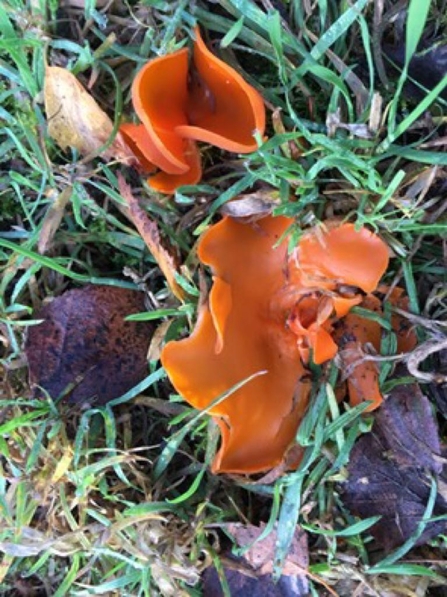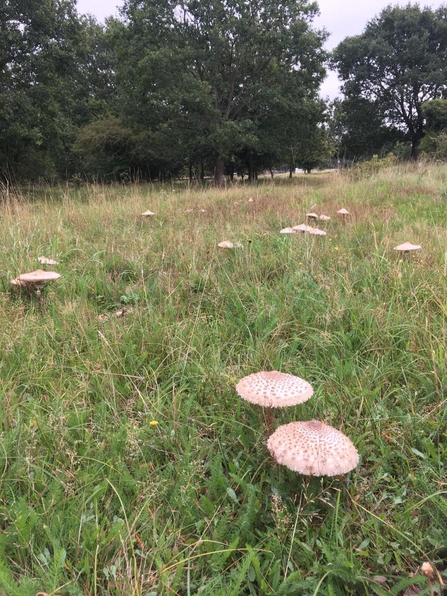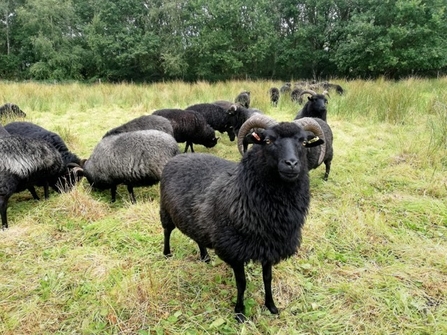Weekly wild news from our reserves, 11th September
Hebridean sheep by Steve Aylward
Aleuria aurantia is also known as the orange peel fungus, due to its resemblance to discarded orange peel. Aleuria aurantia is frequently seen flat to the ground or with a cup-like appearance with upturned edges. The cups are irregular in shape and may have a split or fold in on one side. Aleuria aurantia has thin and fragile sheets of orange, and they can come together looking like petals that form a rosette-like shape. Because of the cup shaping of this fungus, it has also been referred to as the orange fairy cup fungus and can grow to the size of a small orange.
Aleuria aurantia was first described in 1800 as Peziza aurantia by Christiaan Hendrik Persoon, he was a German mycologist, and the epithet aurantia is Latin for orange, due to its vibrant colour. In 1870, the mushroom was renamed Aleuria aurantia by German botanist Karl Wilhelm Gottlieb Leopold Fuckel. In Greek Aleuria aurantia roughly translates as ‘Golden Flour’; the ‘flour’ may be a reference to the whitish underside and the ‘golden’ its colour.

Orange peel fungus - Will Cranstoun
Parasol mushrooms at Knettishall Heath
The Parasol mushroom Macrolepiota Procera is commonly found in open grassland, woodland openings, heathland and city parks, growing in great amounts when found. At full size, both its cap size and height can reach 40cm.
Macrolepiota Procera translates to ‘a long, great scale bearing fungus we’re in favour of’.

Parasol mushroom - Will Cranstoun
What a bounty!
The hedgerows at Foxburrow Farm are rich with berries, hips and haws which will provide essential food for birds and mammals over the autumn and winter.
Hebridean grazers at Bromeswell Green
Our flock of Hebridean sheep have been doing a sterling job of conservation grazing at Bromeswell Green. We think this ewe certainly looks very pleased with herself!

Hebridean sheep at Bromswell Green - David Stansfield
Fen raft spiders at Carlton Marshes
It is a great time to spot the rare fen raft spider, Dolomedes plantarius, in the dykes at Carlton Marshes. Look out for their distinctive nursery webs, and wait patiently, as the mother will nearly always be close by!






